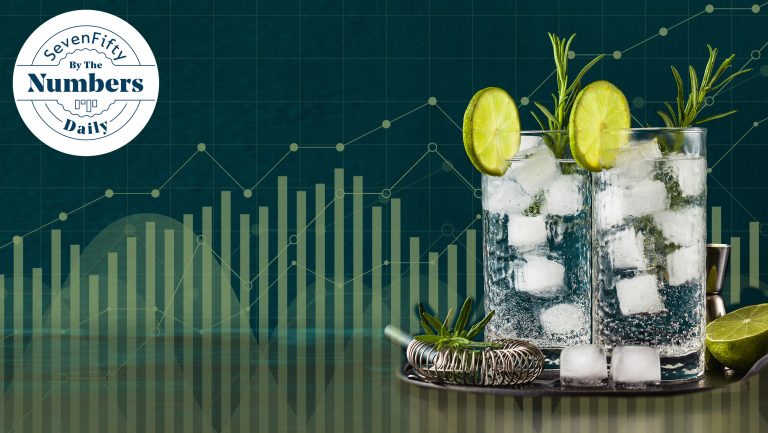Sparkling wine across all categories has been one of the major winners of post-pandemic drinking culture. Estimated to be a $36.7 billion industry in 2022, sparkling wine consumption grew by double-digit percentages between 2020 and 2021, and 2022 has shown a continuation in that growth. This is especially poignant given the relative decline in still wine consumption over the same period, with spirits and RTDs coming for wine’s share of alcoholic beverage consumption in the U.S.
Sparkling wine’s growth is in part due to how the drinking public has changed the way in which they engage with this style of wine. “Traditionally, consumers looked at sparkling wine as a celebration or aperitif, but this has shifted,” says Courtney Wieland, the director of operations for Thatcher’s Wine. The number of people who drink sparkling wine at least on a monthly basis rose from 56 to 72 percent between 2019 and 2022, according to a report by IWSR Drinks Market Analysis, with the total number of Americans drinking sparkling wine up 30 percent over the same period.
Its use in sparkling cocktails and lower-ABV libations such as spritzes has also given sparkling wine a lift in the past several years, along with the swing in consumer preference toward lower alcohol options. “An international palate shift toward higher acid, lower alcohol wines is boosting demand for sparkling wine,” says Sarah Trubnick, the wine director and cofounder of The Barrel Room in San Francisco. “Diversity of the category is increasing as well, with force-carbonated and ancient method/pét-nat wines offering a wide range of flavor profiles and carbonation levels alongside traditional method and tank method styles.” With this expected to continue, the U.S. is projected to account for nearly 15 percent of global sparkling wine sales by value by 2026.

Don’t miss the latest drinks industry news and insights. Sign up for our award-winning newsletters and get insider intel, resources, and trends delivered to your inbox every week.
Champagne and Prosecco continue to dominate the sparkling wine market in terms of value and volume sales respectively, but Cava is on the move, demonstrating the largest growth—a 4.5 percent increase between 2021 and 2022—of any category. Sparkling wine production and sales continue to increase across the globe, however, from South Africa to southern England.
Warming global temperatures will most certainly affect sparkling wine in the coming years. “I see the future of sparkling wine hinging on climate change,” says Jonathan Eichholz, MS, an educator with GuildSomm. “On one side, it will serve as an entry point for newfound geographies to enter into the space of cool climate viticulture to showcase new styles. On another, we will see how classic sparkling wines geographies cope with climate change and which varieties they continue to champion.”
All eyes are on how this may affect demand and pricing, and some key professionals think that sparkling wine’s bubble may be about to burst. “In the sparkling wine category, we’ve observed a similar, recurring 10-year cycle to that of the broader wine and spirits category,” says Bill Terlato, the CEO of Terlato Wine Group. “I believe we’re heading into what seem to be the challenging years. Only by making thoughtful decisions during challenging times, instead of chasing short term trends, [will] Champagne and Prosecco continue to grow and thrive.”
With projected growth pushing the sparkling wine category to a potential $55.4 billion valuation by 2028, there’s much for buyers to consider. See our infographic below for a comprehensive look at the state of the sparkling wine industry right now.


Dispatch
Sign up for our award-winning newsletter
Don’t miss the latest drinks industry news and insights—delivered to your inbox every week.






